I find it disconcerting that not long ago I didn’t know anything about Antietam. In fact, I learned about Antietam entirely by chance when we happened to drive past a sign for it on a trip to New England. I pronounced the name terribly, which led my parents to explain that Antietam is a Civil War battlefield (and the pronunciation: An-tea-tum). When we arrived back at our hotel, I spent the evening researching the Antietam National Battlefield’s legacy, and I quickly decided I wanted to visit. Thankfully my dad, my sister and I took advantage of some extra time on our hands and we spent an entire afternoon at this incredible park.
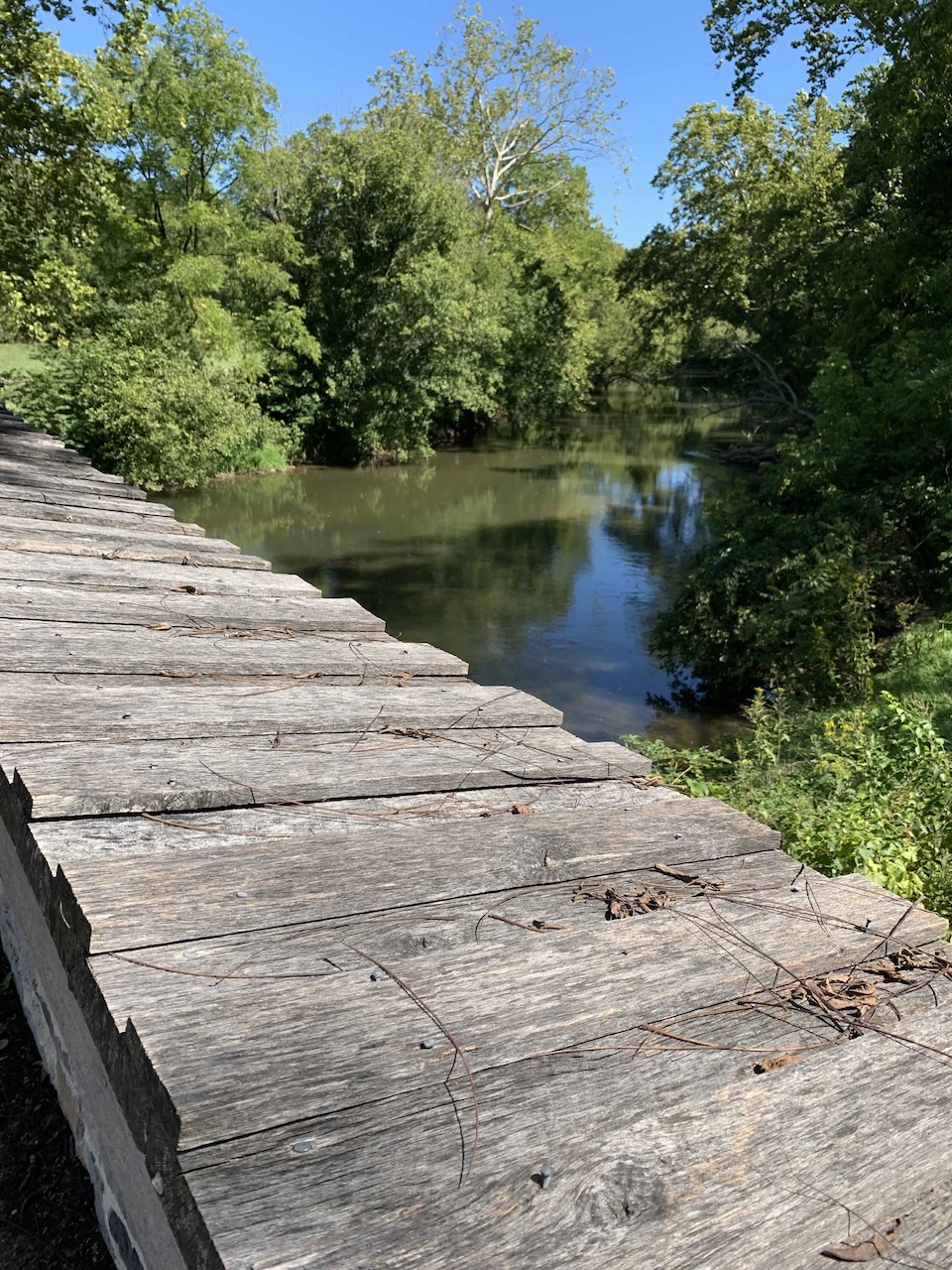
The Battle of Antietam on September 17, 1862, during the American Civil War, is the bloodiest day in American history. The casualty count reached terrifying heights: around 23,000 injuries and deaths combined. Neither the Union nor the Confederates won the day, but the end result helped the Union appear more successful than the Confederates, who retreated south after the battle. President Abraham Lincoln used the Confederates’ retreat to issue the Emancipation Proclamation, the first step in freeing slaves. This is primarily what Antietam is known for today.
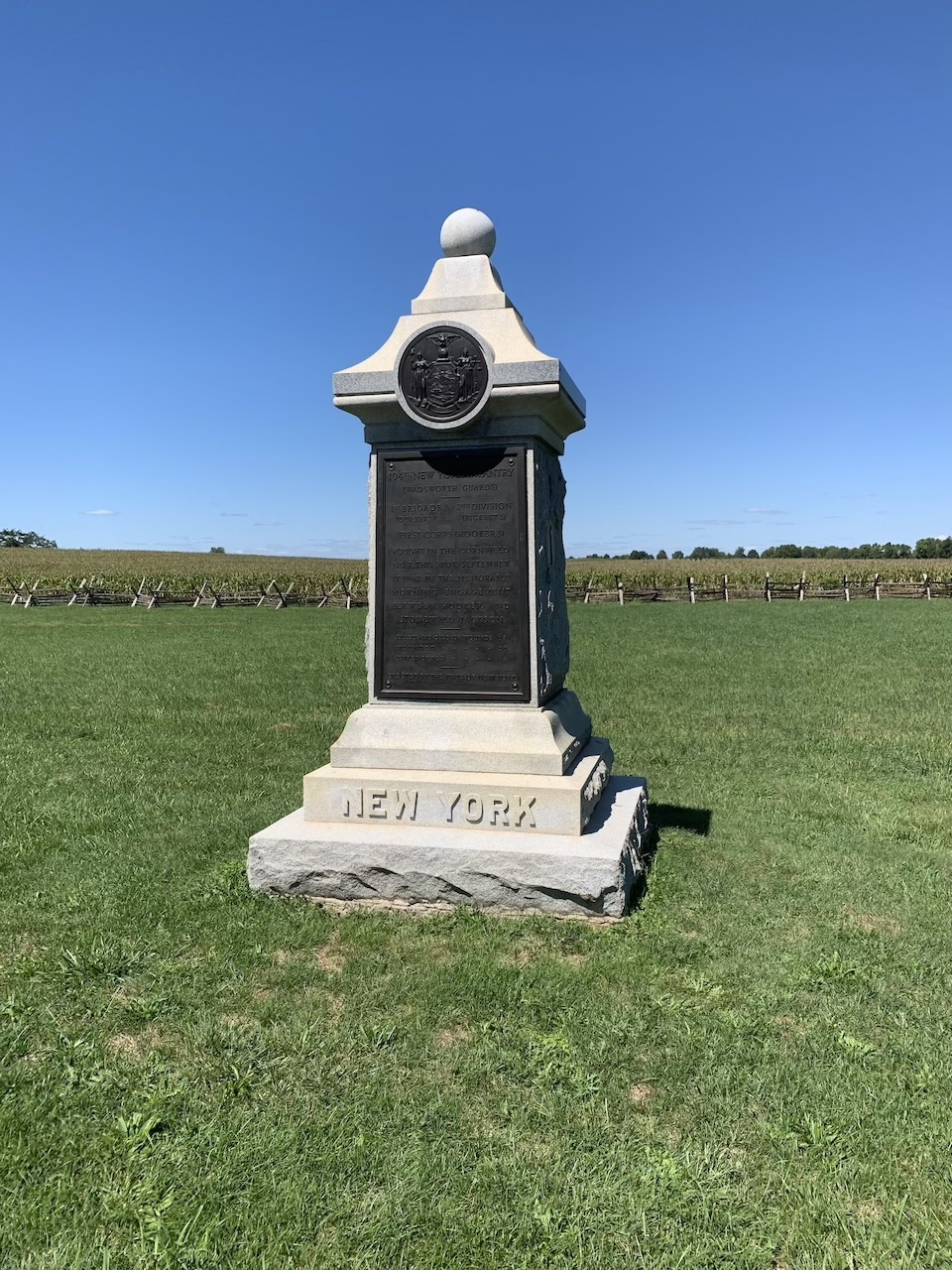
The Antietam National Battlefield is located in Sharpsburg, Maryland, just south of Hagerstown, Maryland, and an hour away from both Chambersburg and Gettysburg, Pennsylvania. If you’re anywhere near the area, Antietam is well worth a visit. The park today is similar to how it looked in 1862: the woods are intact, the farms are maintained and corn is still planted in the field where part of the battle took place. If you ignore modern structures like roads, you can imagine the Union and Confederate armies marching to this fateful place.
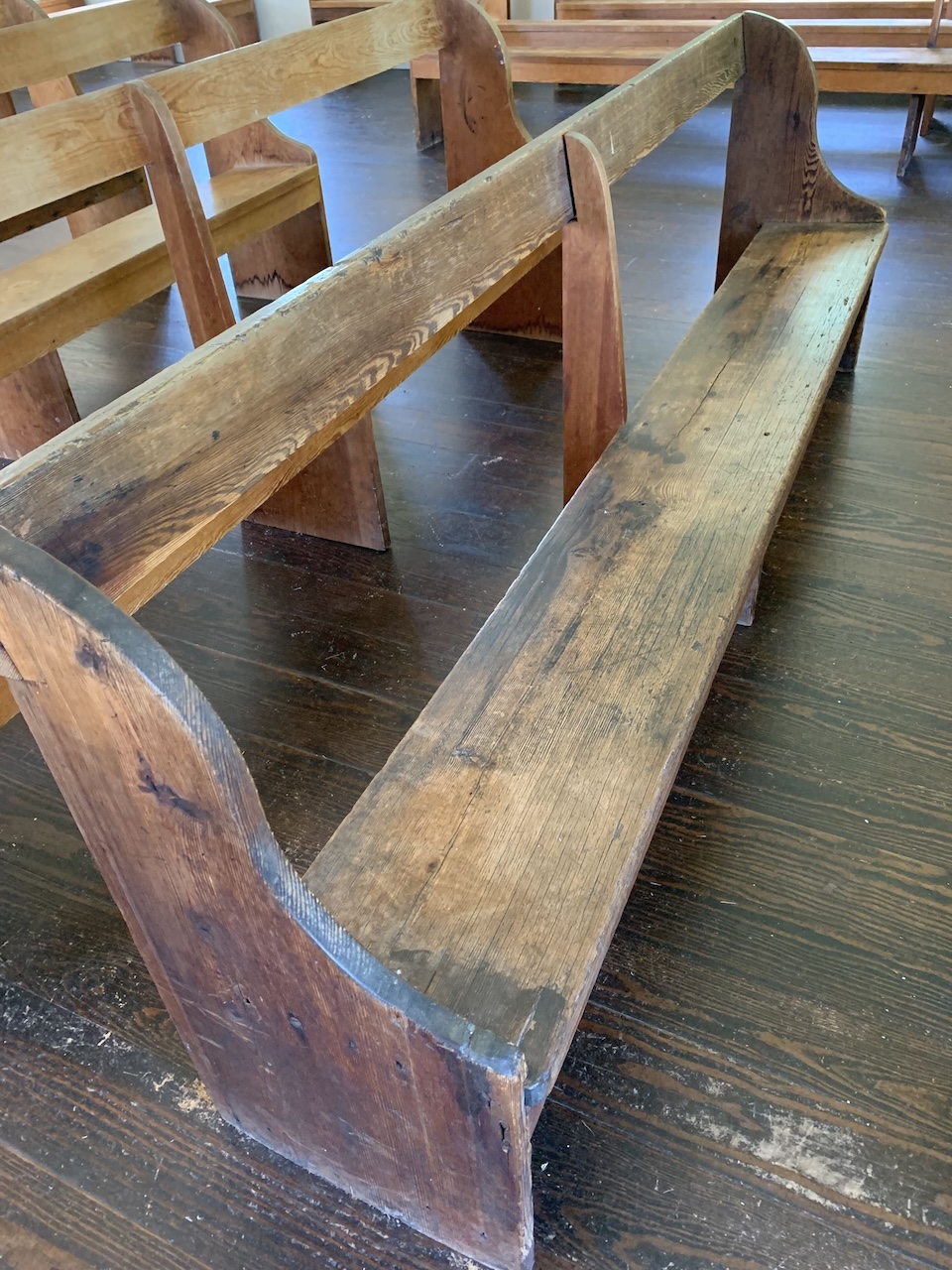
Technology underwent major changes between the American Revolution and the Civil War, and it left a huge impact in casualty statistics. These two articles from History.com and the American Battlefield Trust break down some of the technological advancements of the time. Aside from deadlier, easier-to-use weapons than those of previous wars, the Civil War is also considered the first major conflict documented through photography. Some of the most famous photos from this era are those showing the aftermath of Antietam. The U.S. National Park Service has an online gallery, but I want to warn the potential viewer that some of these photos are quite gruesome.
Imagine wounded soldiers’ terror upon learning that the field hospital’s supply of bandages is gone. This is exactly what happened at Antietam, and desperate doctors resorted to using rough corn husks until Clara Barton, known as the “angel of the battlefield,” arrived at the scene. Barton traveled to many Civil War battles bringing much needed supplies and caring for wounded men on both sides. Nursing could be dangerous, too. This brave woman missed being shot while tending to a wounded soldier at Antietam. The bullet passed through her sleeve, killing her patient and Barton later stated that she never mended that sleeve. At the end of the war, she established an office to identify missing soldiers and helped identify and mark graves at the Andersonville prisoner of war camp. Today, she is most famous for founding the American Red Cross during her lifetime of medical service.
“I have never mended that hole in my sleeve. I wonder if a soldier ever does mend a bullet hole in his coat?”
-Clara Barton
Other women followed the Northern and Southern armies to Antietam to stay close to their fighting husbands and brothers. Some, like Barton, helped nurse wounded soldiers while others cooked and cleaned for the camp. A small handful even disguised themselves as male soldiers to fight. At least a couple female soldiers died and are buried at Antietam. Read more about women at Antietam with this article from the National Park Service.
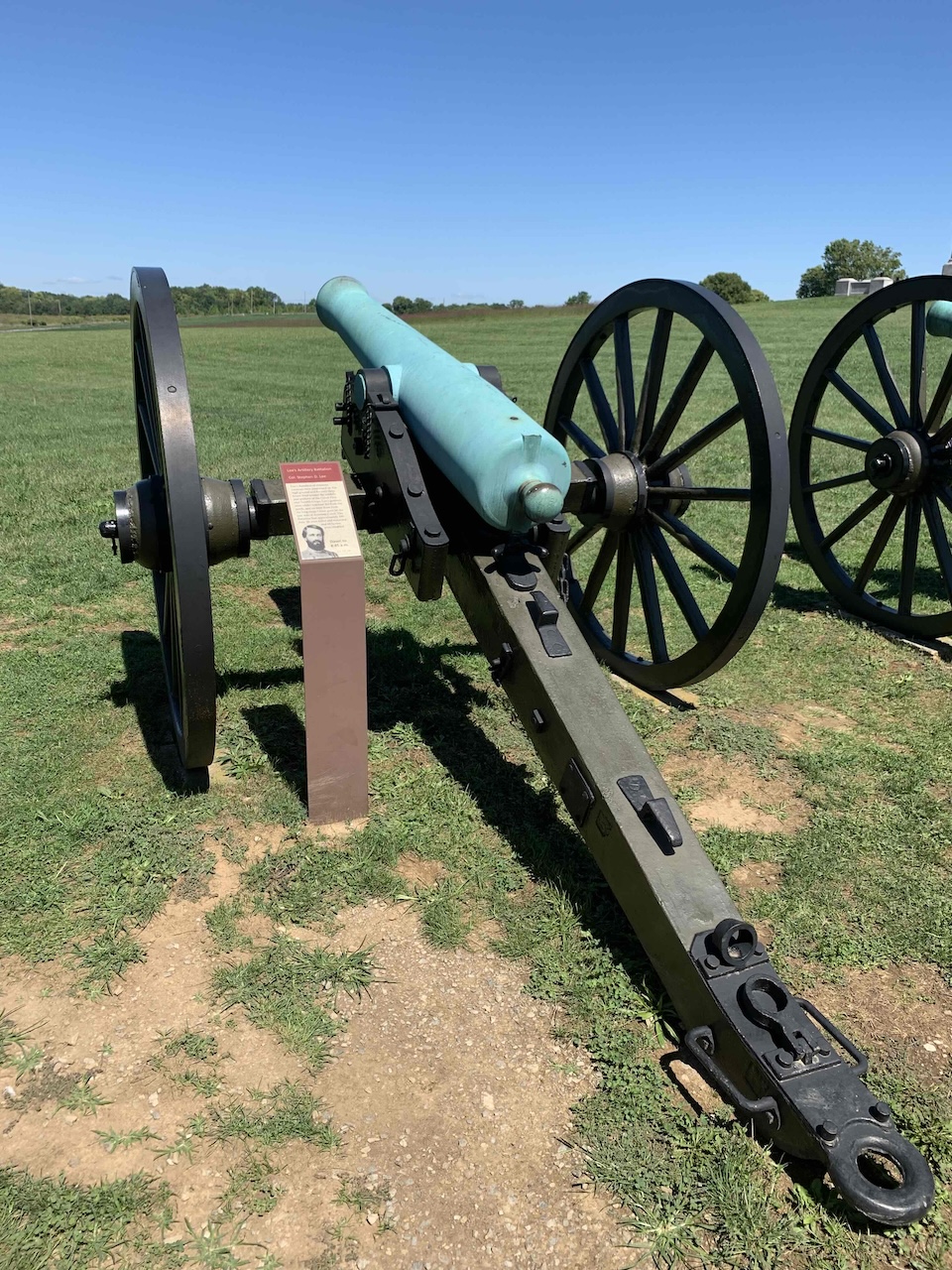
My dad, my sister and I started in Antietam’s visitor center and watched a half-hour documentary that provided a good overview of the battle. After that, we milled around the museum for a few minutes. Unfortunately, most of the artifacts in the visitor center museum couldn’t be displayed due to a water leak, but we did get to see a saber, a couple of bayonets and a probe. All of these items are interesting and historically important, but the probe affected me most.

Surgeons used probes to search for foreign objects in soldiers’ bodies. Just reading the description next to the artifact made and still makes me shudder. It sparked my interest in Civil War field hospitals, so I did a little research. Field hospitals could be filled with battle victims, often lacked supplies and sported sanitation levels far below permanent hospitals’ cleanliness standards. Clips from “Gettysburg” and “Dances with Wolves” come to mind. The Civil War is infamous for field hospitals, but I never realized how primitive and filthy the conditions actually could be. Read more about general and field hospitals in the Civil War at American Battlefield Trust. It makes Clara Barton’s work even more profound.
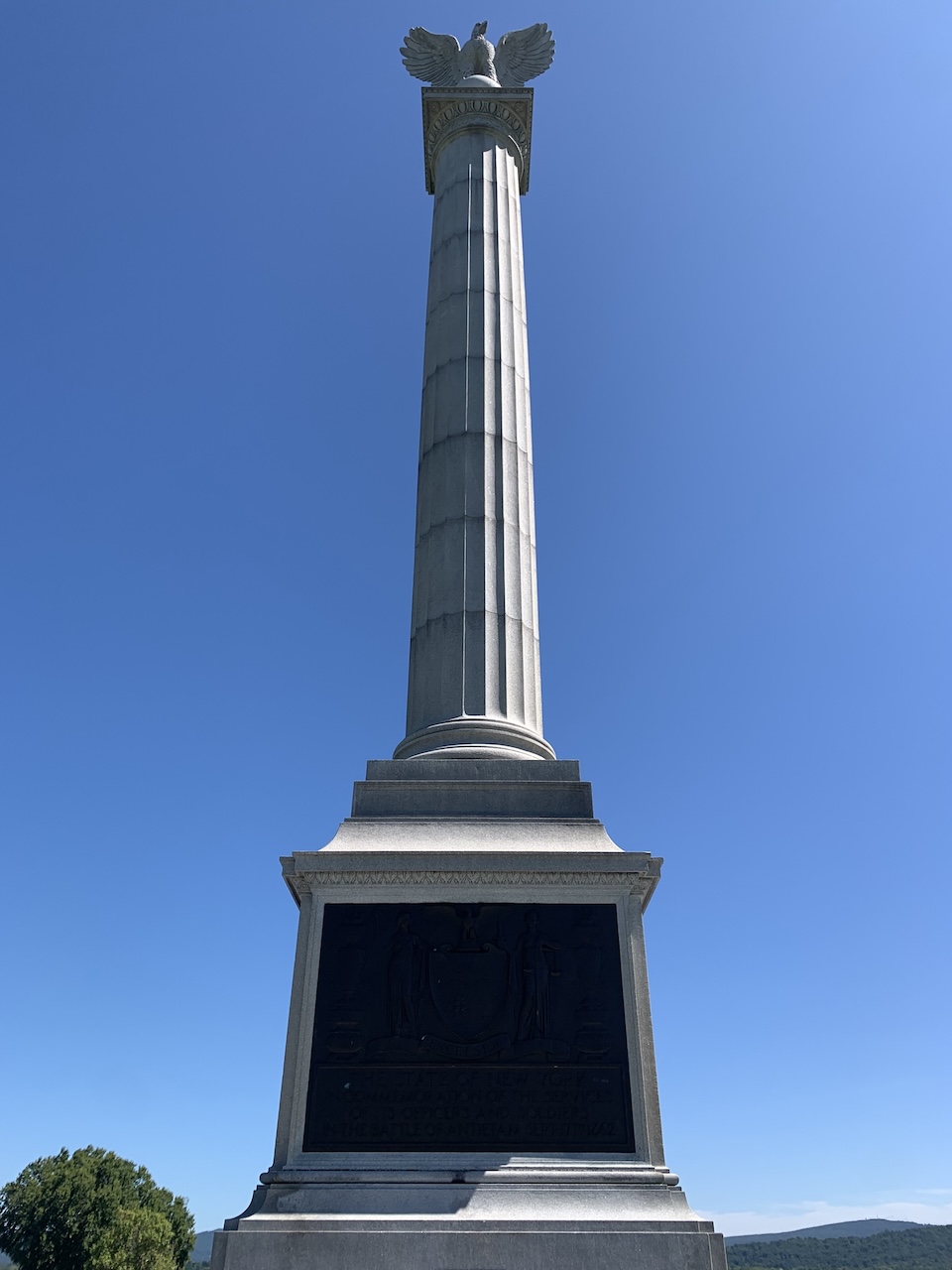
We saw the park in one afternoon, so we opted to take Antietam’s driving tour. The tour route follows the timeline of the battle, starting with the Dunker Church and ending with Antietam National Cemetery. There are several beautiful historic farmhouses along the way, and many appear to be functioning, if sheep grazing near the road are any indication. Signs detailing the particulars of the one-day battle and monuments to various regiments also line the tour roads. Additionally, the park is home to more than 10 miles of trails for those with time to explore the battlefield in depth.

Antietam seems to be fairly accessible. There are sidewalks near the Visitor Center, as well as walkways around structures like the Observation Tower and Burnside Bridge. I think taking the time to walk around the park offers the best experience. Signs along the tour roads can be inconvenient to read out the car window, especially if there are vehicles behind you. The trails wind through important places that cars simply cannot go, such as the cornfield, the most casualty-heavy part of the battle. However, for those short on time, the driving tour is ideal. Below are three of the stops that I found particularly interesting.
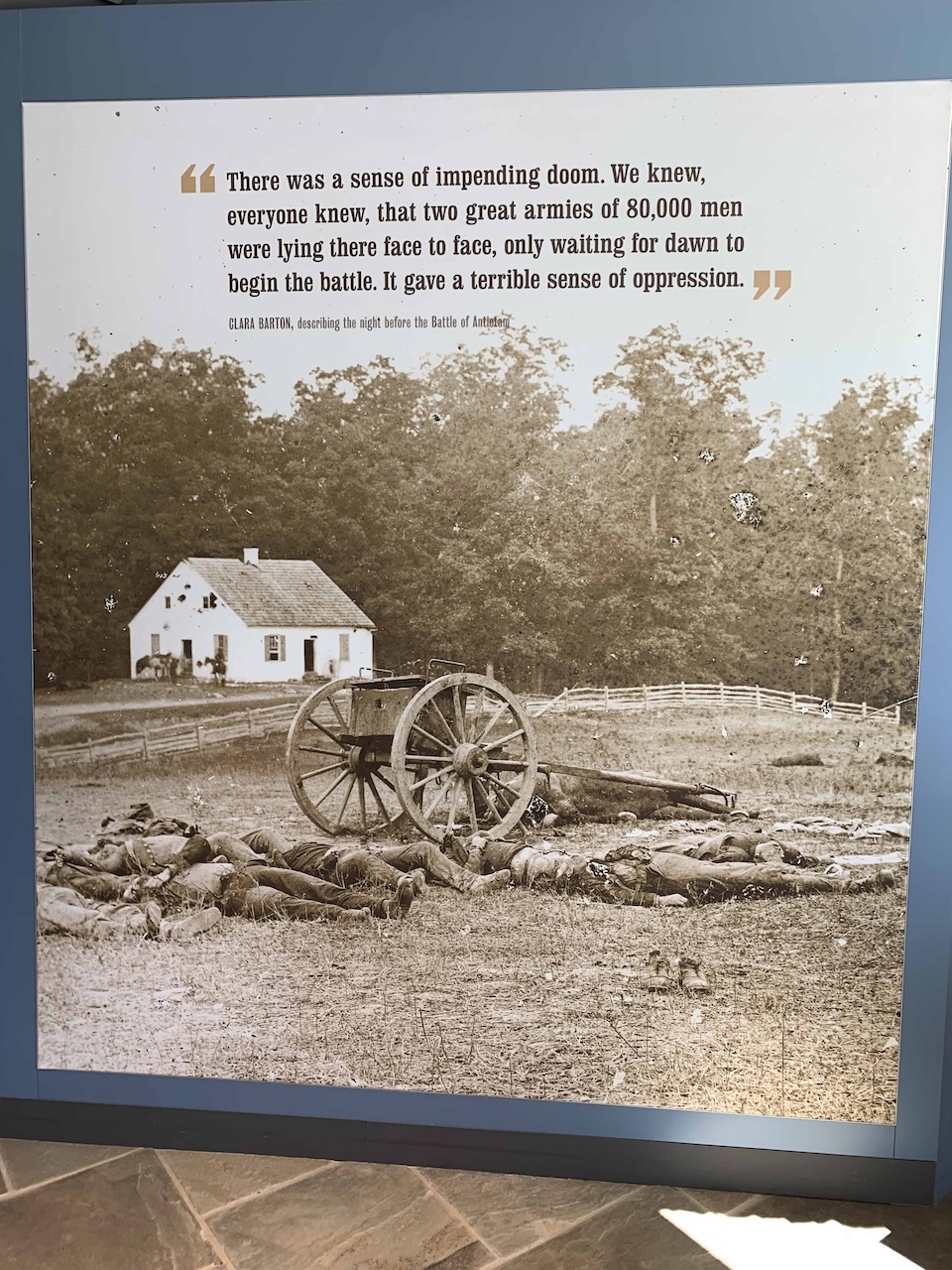
I love historic churches, so I couldn’t wait to see the Dunker Church. The Dunkers (now called the Church of the Brethren) are a German sect of pacifists, named for their habit of dunking people during baptism, more ceremoniously known as full-immersion baptism. This lovely little church stood for 10 years before Antietam. Fighting took place nearby on the morning of the battle and soldiers later used the church as a makeshift hospital. Souvenir hunters weakened the building’s structure over time, and as a result, the Dunker Church blew down in a windstorm in the early 1920s. Today it is restored with as much of the original material as possible, including a pew, floorboards, bricks and windowsills.
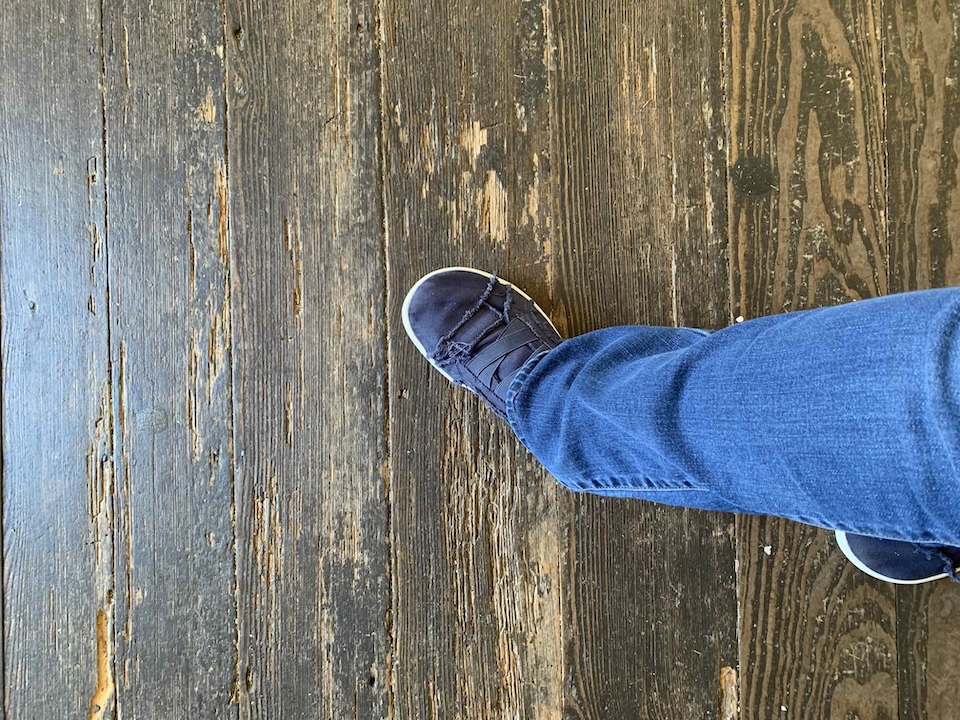
Out of every tour stop, the Sunken Road, later renamed to Bloody Lane, affected me most. There were around 5,500 casualties on this small stretch of former road, and it is sunken indeed. When you walk the ground where men fought and died for what they believed in, it doesn’t matter who they were, or even what they fought for. Human life bled out under your feet. You are walking on ground sacred to our country’s history, and there’s a very strong feeling in your gut that comes with knowing that. It’s heavy and humbling and a little frightening, even with no familial attachment and no knowledge of who died there. To think that Americans killed other Americans makes it worse. It is a very real, moving experience to stand in the ditch where the dead once lay and it’s one I think everyone should have.
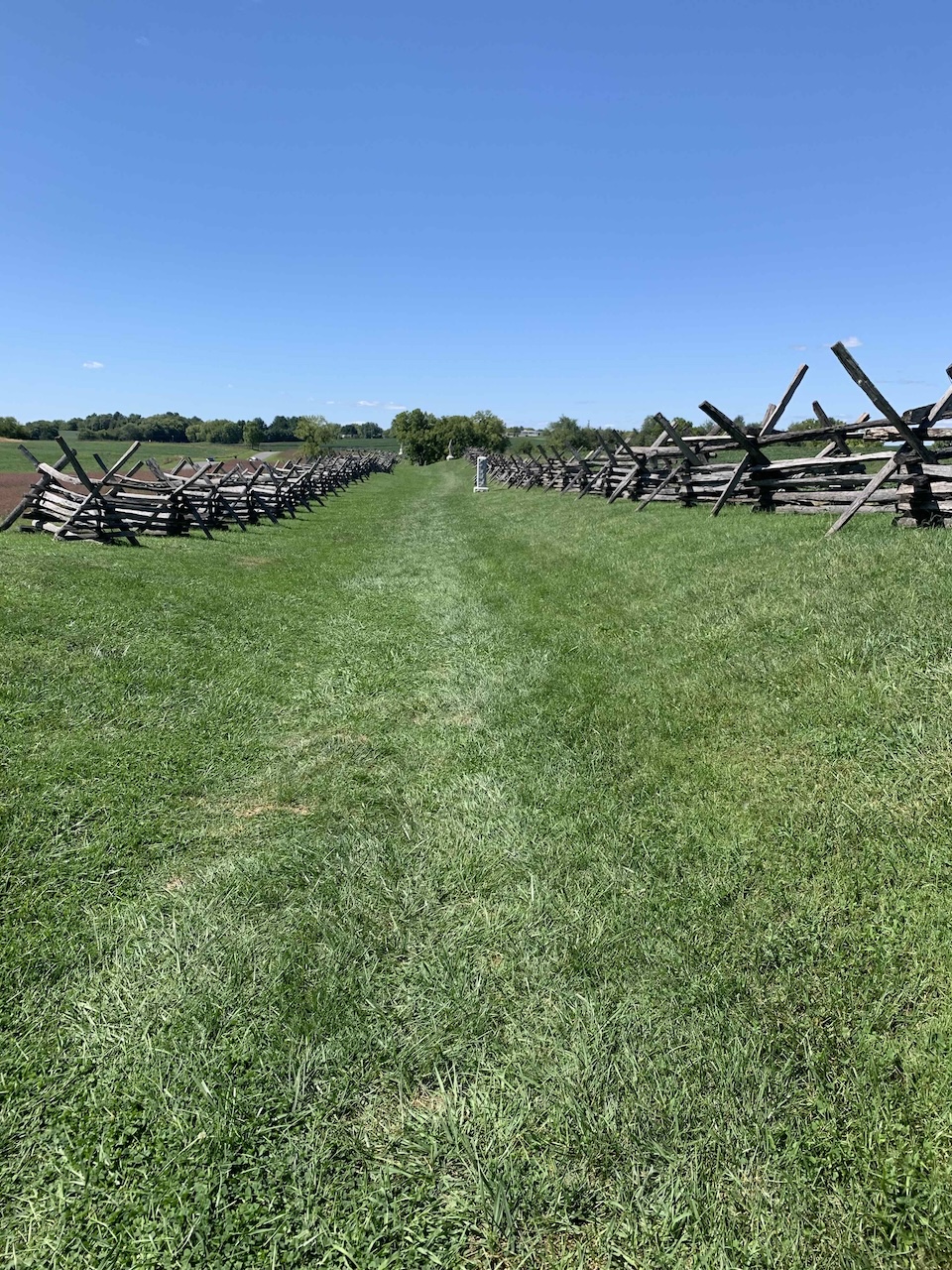
I inherited an appreciation of historic bridges from my mom, and as far as I’m concerned, old stone bridges like Burnside Bridge are works of historical art. About 500 Confederates held the bridge for around three hours, but Ambrose Burnside’s troops eventually captured it. There is a large Sycamore tree on the side that Union troops attacked from that witnessed the battle and it still stands. Burnside Bridge is nearly 200 years old and still original, though it has been restored over the years to maintain structural stability. This place is haunting, especially after learning about the loss of life. Like Bloody Lane, it stands beautiful and serene today.
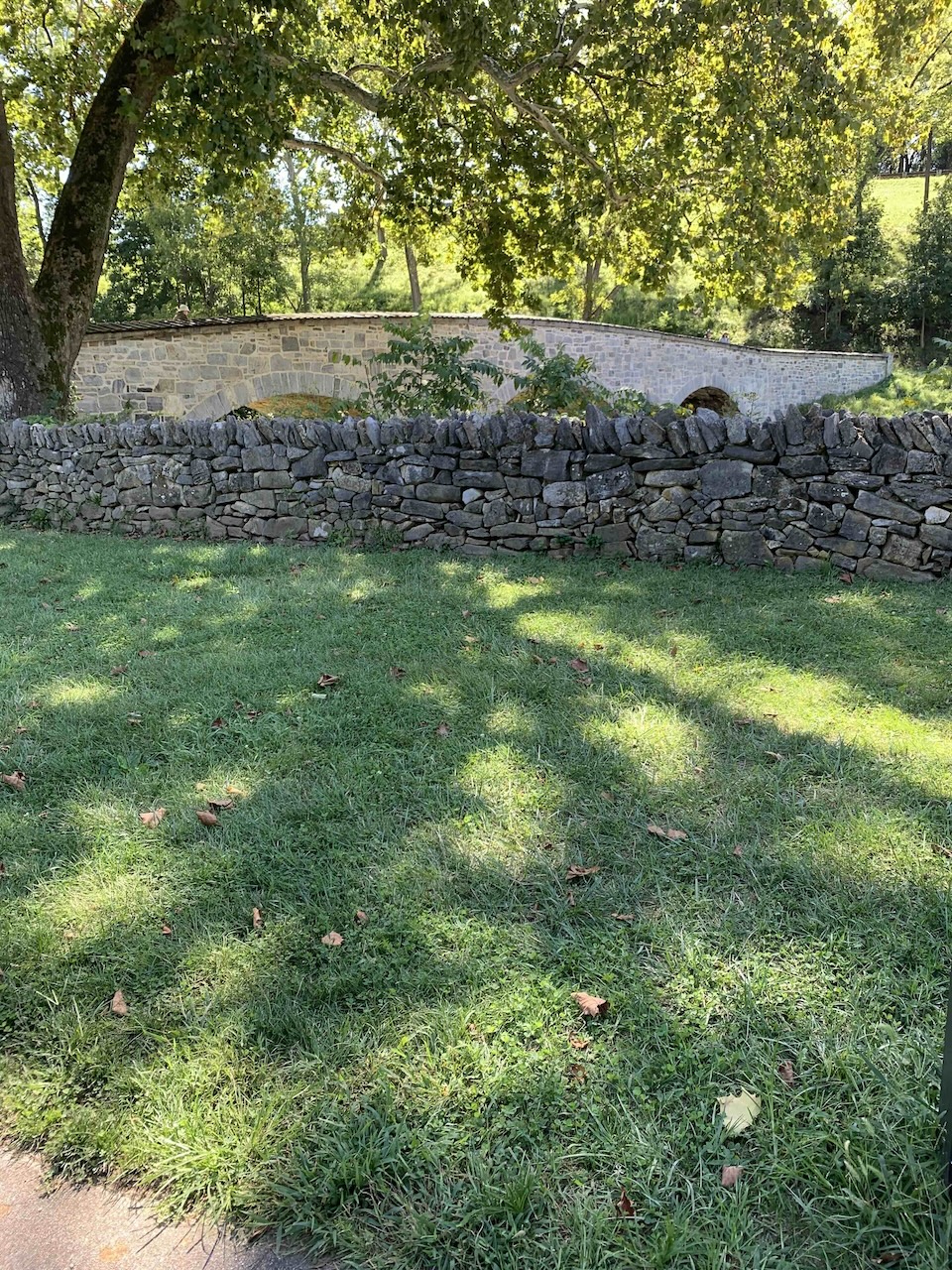
The only other historic park I’ve visited in the area is Valley Forge, and I think Antietam is better cared for. Aside from the water leak in the museum, nothing seemed to be closed or run down at Antietam. The park rangers stationed at the driving tour stops all eagerly answered questions. A volunteer gave us the grand tour of the Dunker Church, pointing out the floorboards and pew original to the building. Another park attendant stationed at Burnside Bridge told me about the old Sycamore and proudly showed me how to take a vertical panorama of the tree. I believe he mentioned he learned the technique from a 12-year-old, which I found rather funny. Even though I haven’t visited many national parks, to me Antietam symbolizes what a historic park should be: informative, well-maintained and full of friendly and knowledgeable rangers.
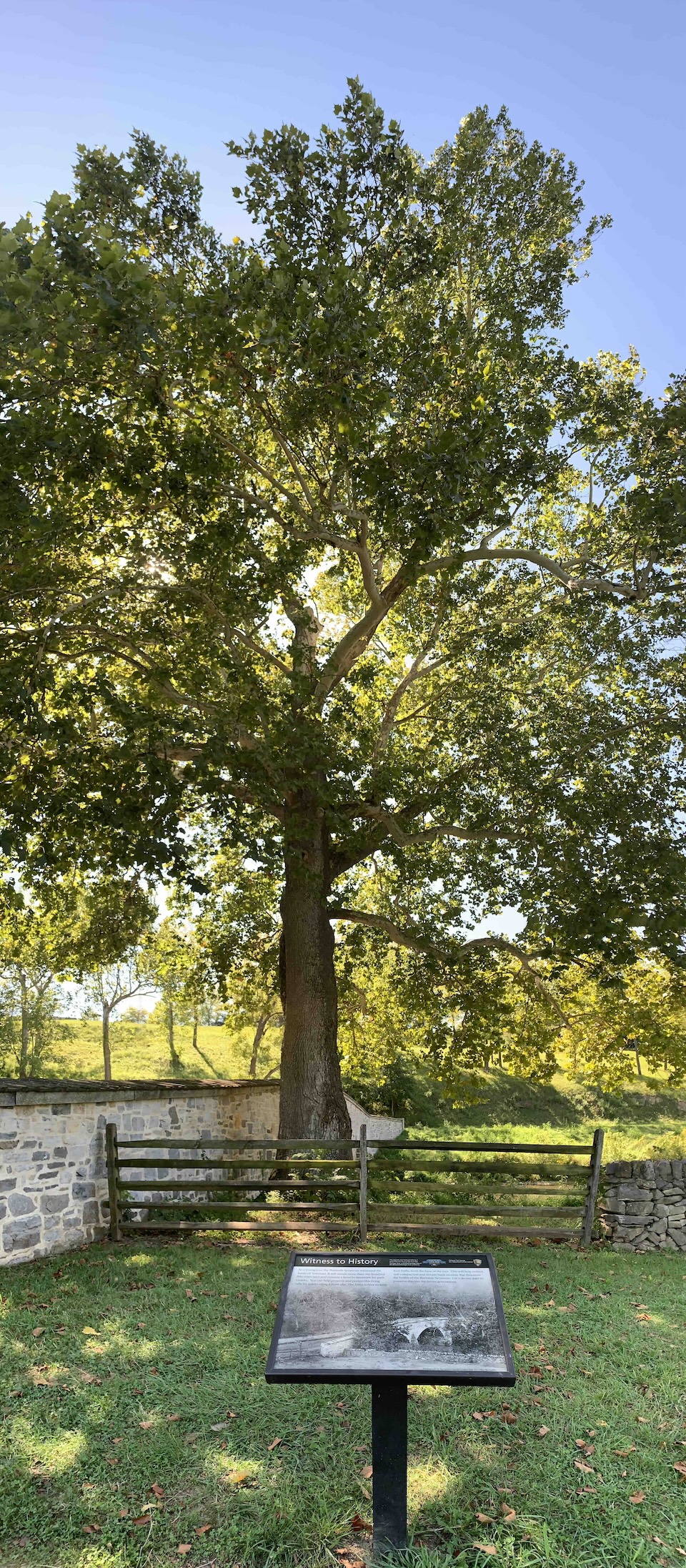
The story of Antietam is a sad one. More than 3,600 soldiers died in one day out of nearly 23,000 casualties, and wounded soldiers faced overwhelmed field hospitals. It’s a place that is steeped in history. Just a year ago, I might not have been capable of appreciating a battlefield like this one, or Gettysburg, or even an encampment like Valley Forge. As Americans, it’s our duty to know our history and appreciate the physical reminders we have of it, no matter how terrible. We can’t change what happened in the past, but we can learn from it and pass on those lessons.

Our Civil War is such an important part of our past. We can’t forget that these soldiers were people. They owned farms and businesses and they supported wives and children. Too often in war soldiers are divided into two types: those who are glorified and those who are not, or “good” and “bad,” when every single man who fought deserves to be remembered. Every single one of them sacrificed something. Men on both sides of war are willing to die for the cause that they believe in. That is a truly scary thing, especially in a civil war when soldiers might know men on the other side of the field, and I entreat you to think about that. Find a veteran to thank for their service, and consider visiting a national park with military history. Even if one park doesn’t touch you the way it might move someone else, it’s never something you’ll regret doing.
Below are a few more photos of Antietam that I’d like to share.






"Anna" is a teenage girl who loves to write, read, and do just about anything artsy. She enjoys writing about nature crafts and her experiences while learning to hunt and cook wild game. Anna firmly believes that backyard chickens lay the best eggs and that spending time outside with her flock every morning will start the day off happily. She is extremely grateful to her best friend, who inspired her to really take writing seriously. You can find her lost in her latest idea or listening to her sister "Rose" read book quotes. View all posts by Anna